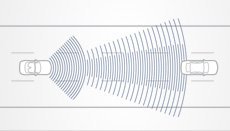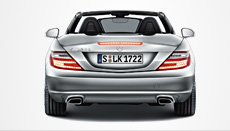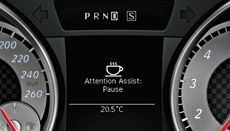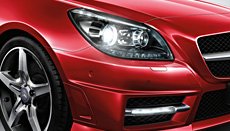


The integrated safety concept from Mercedes-Benz
Phase 1: Safe driving
Phase 2: In the event of danger
Phase 3: In an accident
- At the core: the extremely rigid passenger cell and crumple zones ensure a high level of occupant safety. The reinforced A-pillar and the rollover bars also give the Roadster outstanding structural strength.
- If required: depending on the accident type, the six airbags and belt systems are selectively activated. The sensor system only activates the restraint systems that are actually needed.
- All-round protection: depending on the predicted severity of a collision, the adaptive front airbags in the SLK can be deployed in two stages (in a minor collision, in the first deployment stage the airbag is only partially filled). In side-on collisions exceeding a defined threshold, newly-developed head and sidebags in the flanks of the seat backrests are deployed on the impact side. The headbags deploy from the upper edge of the door inner sides, the sidebags are integrated on the outside edges of the seat backrests.
- Safety is all in the head: crash-responsive head restraints improve occupant protection and help to reduce the risk of whiplash injury. In the event of a rear-end collision the head restraints are instantly displaced by around 40 mm towards the front and 30 mm upwards, providing support for the seat occupant's head at an earlier stage.
- Intelligent protection for other road users: the standard active bonnet function can help reduce the risk of injury to pedestrians or cyclists colliding into the bonnet if the car is travelling at a speed between 25 and 55 km/h. To cushion the blow, the bonnet springs up by approx. 8.5 centimetres at the rear.
Phase 4: After an accident
- Optimum protection: The engine can be turned off automatically and the fuel supply can be cut off.
- Safe lighting: hazard and emergency interior lights can activate to lower the risk of accidents and help locate the car.
- Aiding escape: the side windows can be partially lowered and the door locking mechanism can be automatically released.
- Measure to aid rescue: integral crash joints between the wing and the door can make opening the doors after a frontal collision easier.





